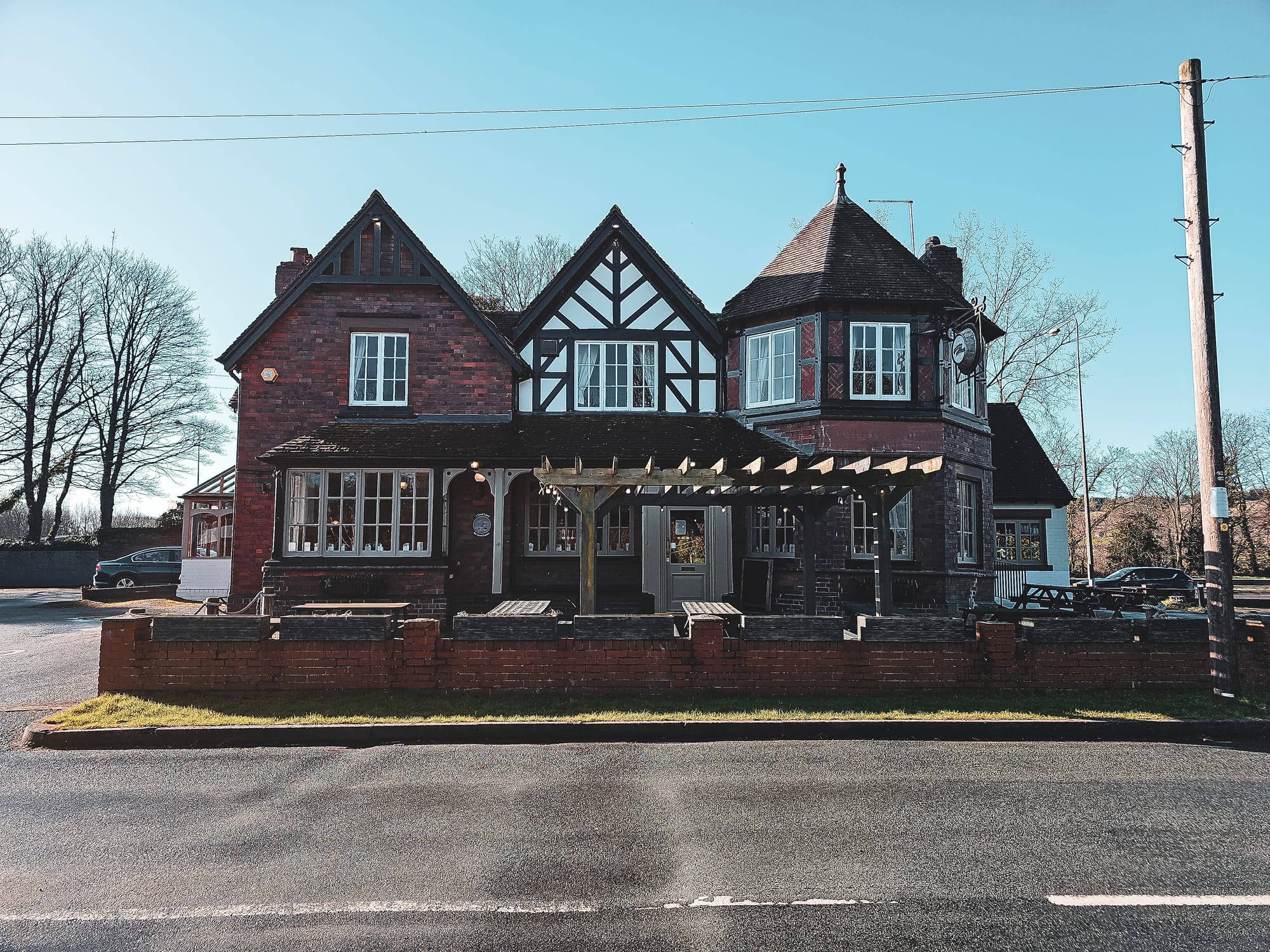Located in Meaford, Staffordshire, the George and Dragon Pub stands as a significant part of the village's history, tracing back to the 19th century. This establishment has experienced significant changes over time, evolving from a farm and coaching inn to a car garage and more.
Watch my video of the George & Dragon on YouTube
Historical Beginnings and Architectural Development
In the late 19th century, the George and Dragon Inn in Meaford underwent significant changes led by Lady Mary Anne Forester. Starting in 1880 and completed by 1884, this renovation was part of Lady Forester's wider effort to improve Meaford, which included updating the entire village and building a new school. The project aimed to modernize the inn, making it a standout feature in the village, while keeping in line with the local architectural style.

The Hon. Mary Anne JervisPortrait of The Hon. Mary Anne Jervis (Lady Forester), aged 18, daughter of Edward Jervis Jervis, Viscount St. Vincent. Oil on canvas. She is seated at a writing desk with a scroll in her left hand. White ...View Full Resource on Staffordshire Past Track
The Meaford School House, as it was known, was built with a distinctive turret, a feature that added architectural character and charm to the building, but has unfortunately been lost to time. It was established as a mixed school, intended for both boys and girls, with a capacity for 50 pupils. This development was significant for Meaford, highlighting Lady Forester's commitment to improving not only the social infrastructure through the pub but also the educational facilities within the village.
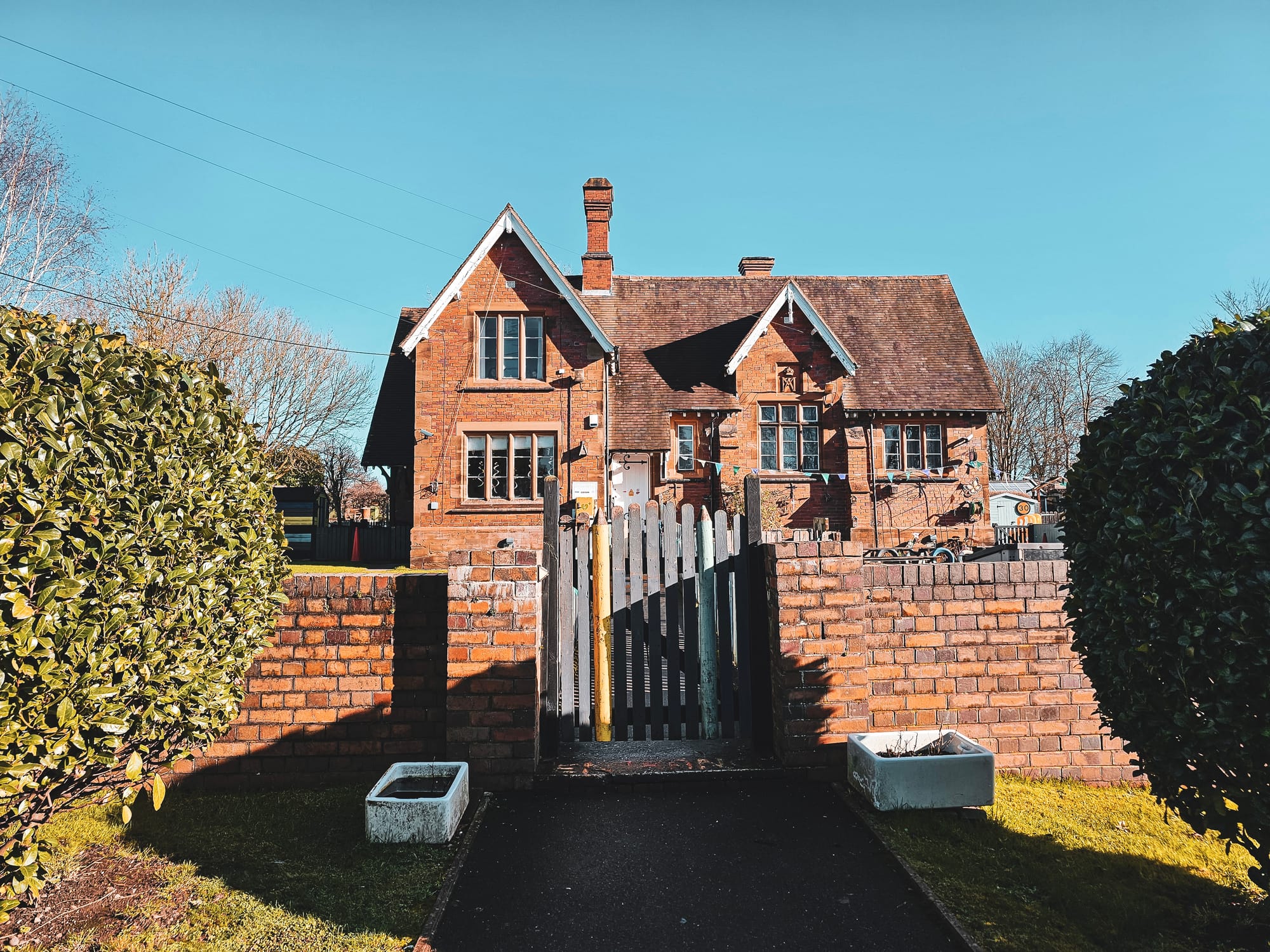
Before Lady Forester's renovations, the site hosted an inn and served as the home farm for Meaford Hall, as shown by the 1861 census. This indicates that the location was historically used for both hospitality and agriculture, playing a vital role in the community's economy and social life.
Lady Forester's work on the George and Dragon was careful and deliberate, intending to blend Meaford's architectural history with the conveniences needed by contemporary patrons. By doing so, the inn not only became a more impressive structure but also continued to serve as an important gathering place for the village, symbolizing Meaford's ability to embrace change while respecting its heritage.
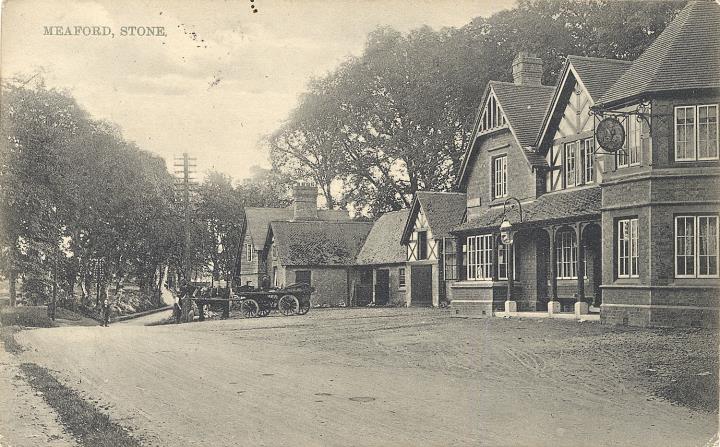
The George and Dragon, MeafordOn the right is the George and Dragon, rebuilt by Lady Forester of Meaford Hall in the 1880s. At the time of this view the road was the main route between Stone and Newcastle-under-Lyme and Nantwich. ...View Full Resource on Staffordshire Past Track
The George and Dragon and the Meaford Inn
It's crucial to distinguish the George and Dragon from the Meaford Inn, another local pub. The two were different establishments, with the Meaford Inn being an older, smaller pub located elsewhere in the village. Lady Forester's redevelopment of the George and Dragon was a separate endeavour, aimed at creating a venue that could better serve the evolving needs of Meaford's residents and visitors.
It is, and has been, often referred to as The Meaford Inn, especially in local media. This has caused much confusion for people, both locally and trying to research the area.
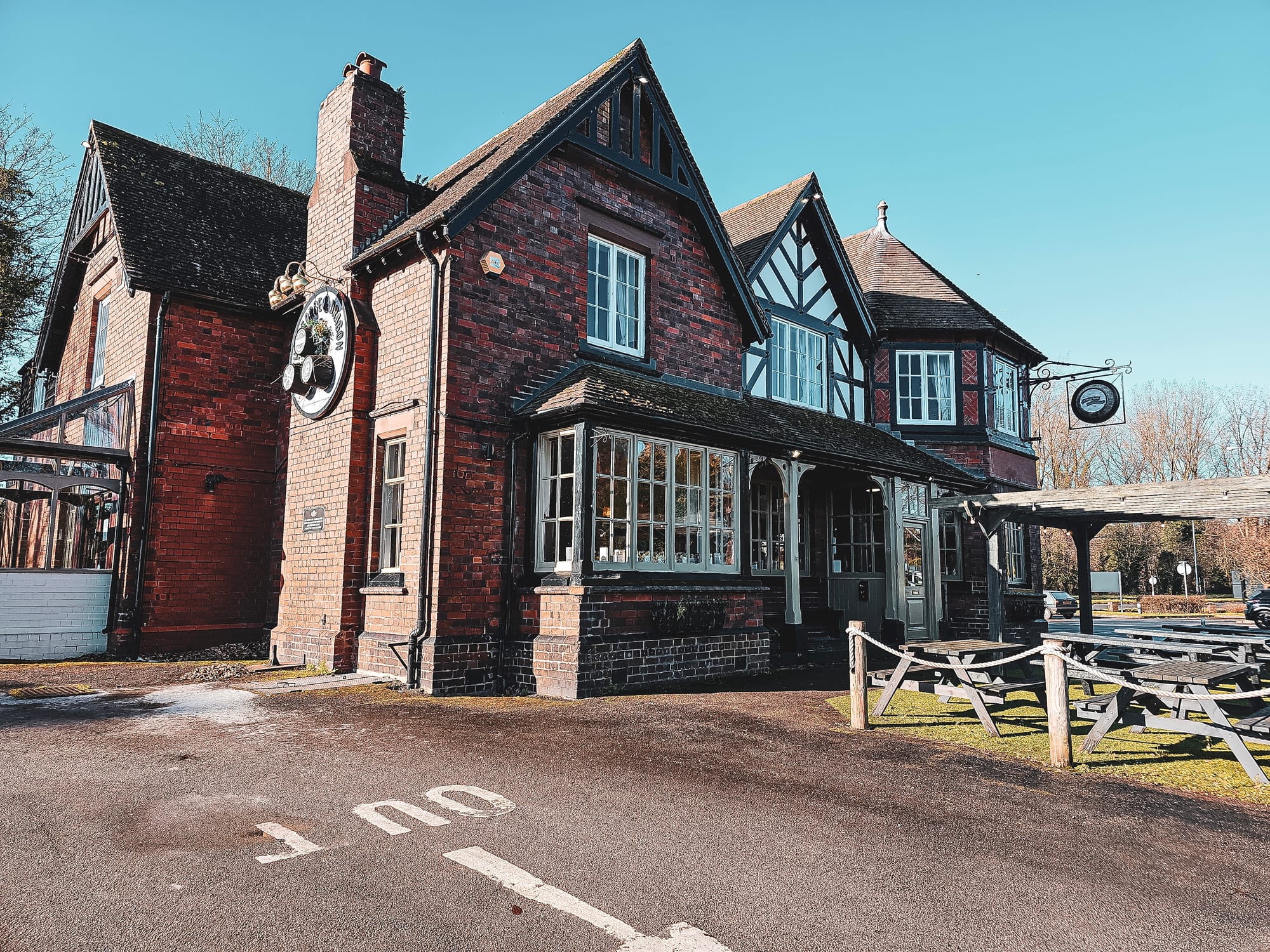
Landlords and Their Role in the Community
The George and Dragon in Meaford has been managed by a series of landlords over its history, each playing a key role in the pub's development as a central community venue. Notably, John Walter Brockley became the landlord in 1860, initiating a tradition of hospitality that made the pub a welcoming environment for locals and visitors. Following him, Thomas Shardlow took over in 1880, continuing to foster a sense of community within the inn's walls.



Under the management of these landlords, the George and Dragon became known for more than just its food and drink; it evolved into a vital gathering place for the Meaford community. This was partly due to the pub being chosen as a venue for local inquests, a role that underscored its importance as a communal hub. For instance, inquests into local matters and deaths were conducted within its premises, turning the pub into a setting for significant community decisions and deliberations.
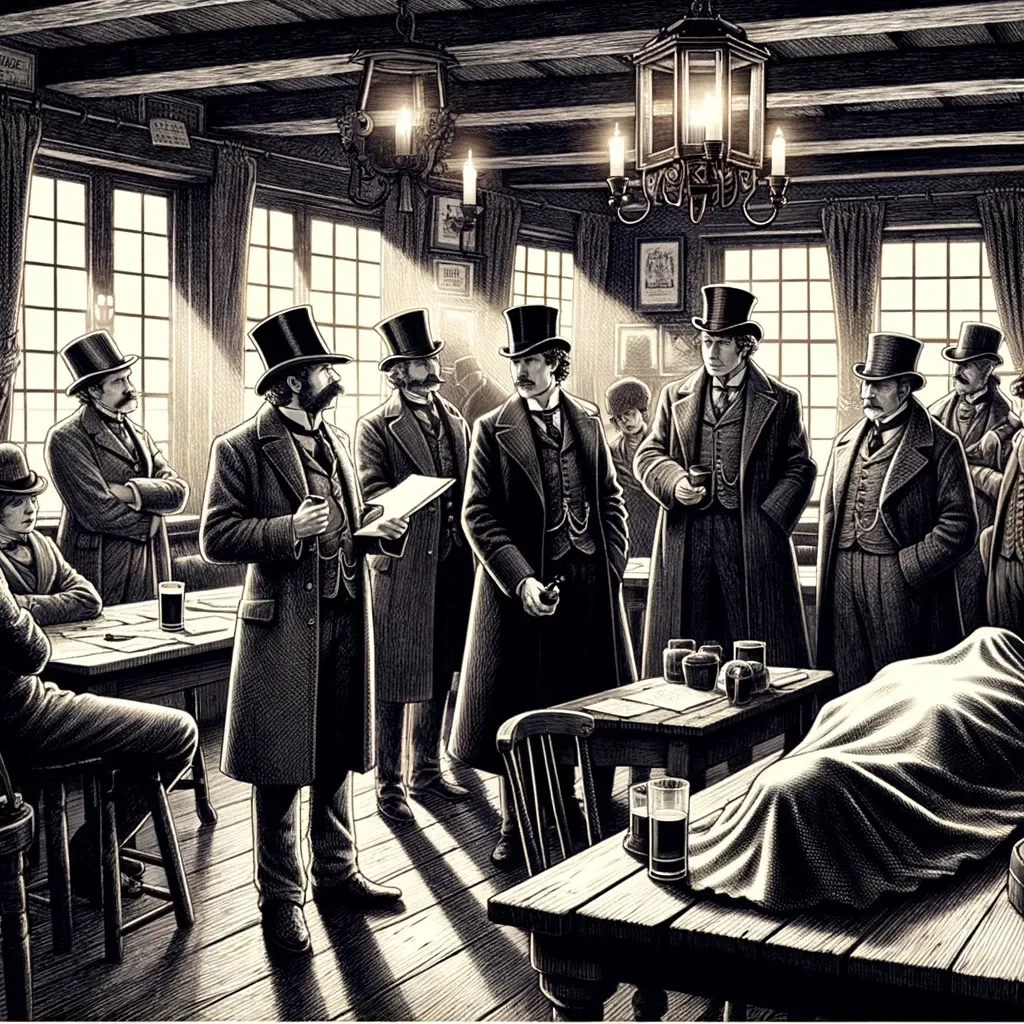
These inquests, which were a common part of 19th-century community life, brought residents together during times of tragedy or uncertainty, allowing for transparent discussion and resolution of local issues. The pub's involvement in such events highlighted its function as more than a place for socialising; it was a key venue for addressing serious communal concerns.
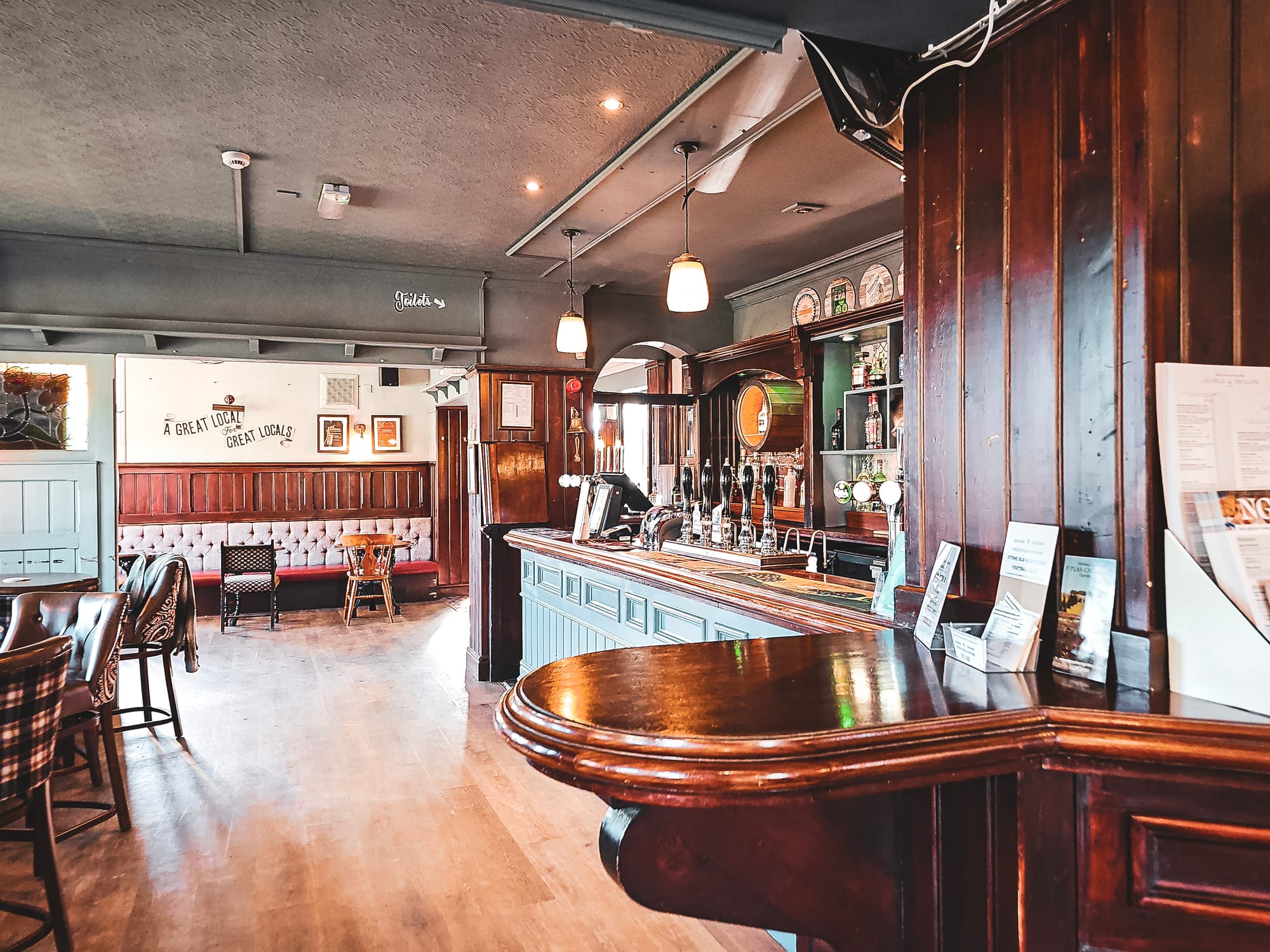
Evolution Through the Ages
Originally, the George and Dragon served dual purposes as both a coaching inn and a farm, catering to travellers and playing a significant role in the agricultural life of Meaford. This combination of services underscored the establishment's central role in the village's economy and social life. However, as the needs of the community evolved, so too did the functions of the George and Dragon.
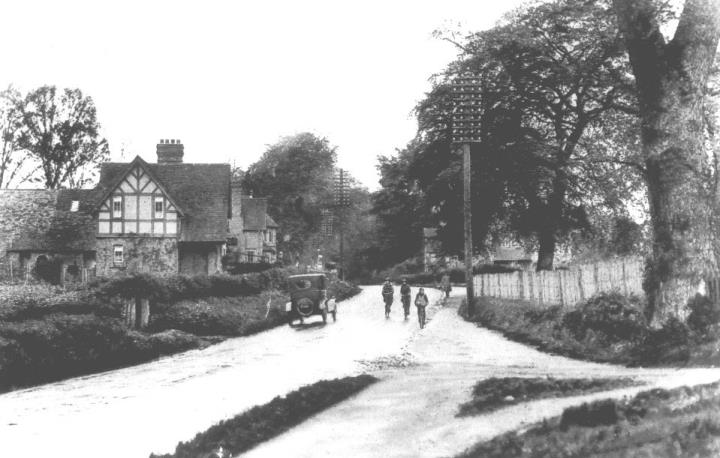
Meaford, Stone,Meaford Village was largely developed by Lady Forester of Meaford Hall in the 1880s.Part of her improvements included the rebuilding of the George and Dragon Inn in 1884, seen on the left.View Full Resource on Staffordshire Past Track
By the 1940s, amidst the backdrop of changing societal norms and technological advancements, the George and Dragon continued its farming activities but also began to adapt to the burgeoning automotive industry. This period marked the start of a significant transformation for the pub, as it began to offer car sales and repair services. The out buildings were transformed from a farm, into a car garage and repair centre. This expansion into the automotive sector was a response to the increasing importance of motor vehicles in rural and village life, reflecting the pub's ability to adapt to the changing times.
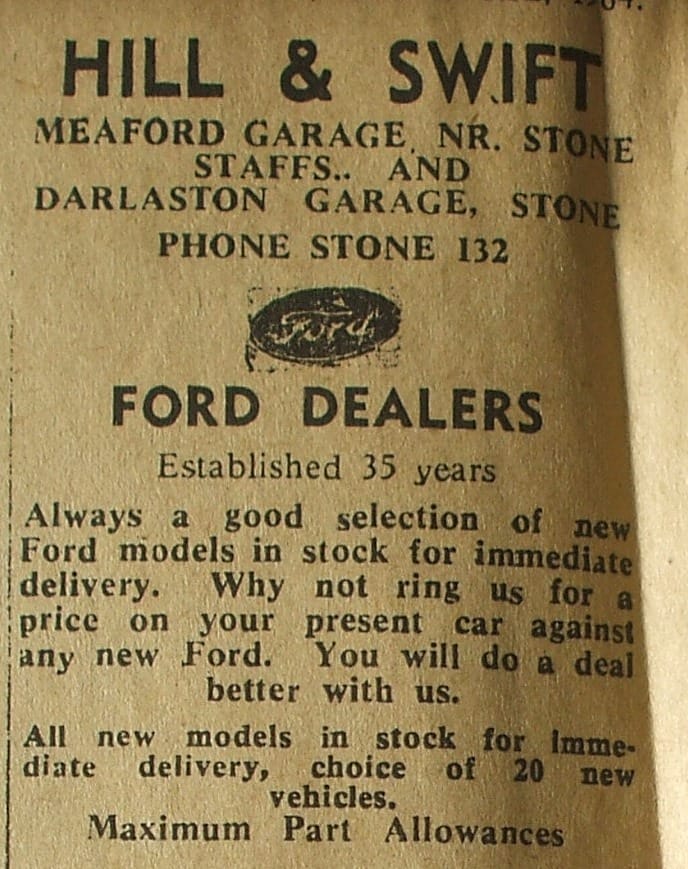
The integration of car sales and repair services alongside the pub illustrated the George and Dragon's innovative approach to business. This blend of the old and the new allowed the pub to maintain its relevance and importance within the community, meeting the diverse needs of its patrons. The automotive services offered by the George and Dragon became increasingly significant, eventually becoming a notable aspect of its operations by the 1970s.
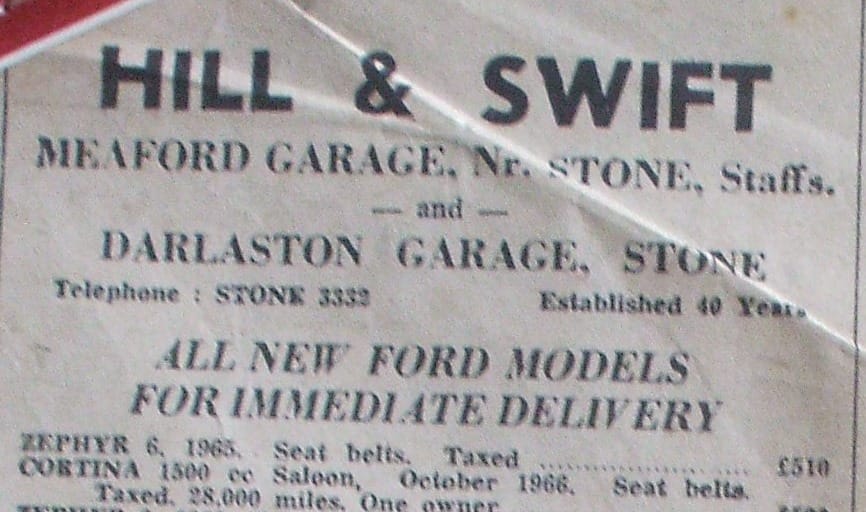
This evolution from a coaching inn and farm to include automotive services was not just a change in business operations but also a reflection of the George and Dragon's commitment to serving the community's shifting needs. By adapting its offerings to include car sales and repairs, the George and Dragon demonstrated a forward-thinking approach, ensuring it remained a vital part of Meaford's social and economic fabric. This adaptability has been key to the establishment's longevity, allowing it to continue as a cornerstone of village life through decades of change.


The Straw Family's Legacy
The Straw family played a pivotal role in the history of the George and Dragon Pub, particularly during the 1950s when Ted and Sybil Straw managed the establishment. Their tenure was marked by a strong emphasis on community engagement, making the pub a central gathering place for Meaford's residents. The affectionate nickname "Straws," used by locals during this period, reflected the deep personal connection and affection the community felt towards Ted and Sybil Straw and the welcoming atmosphere they fostered at the pub.
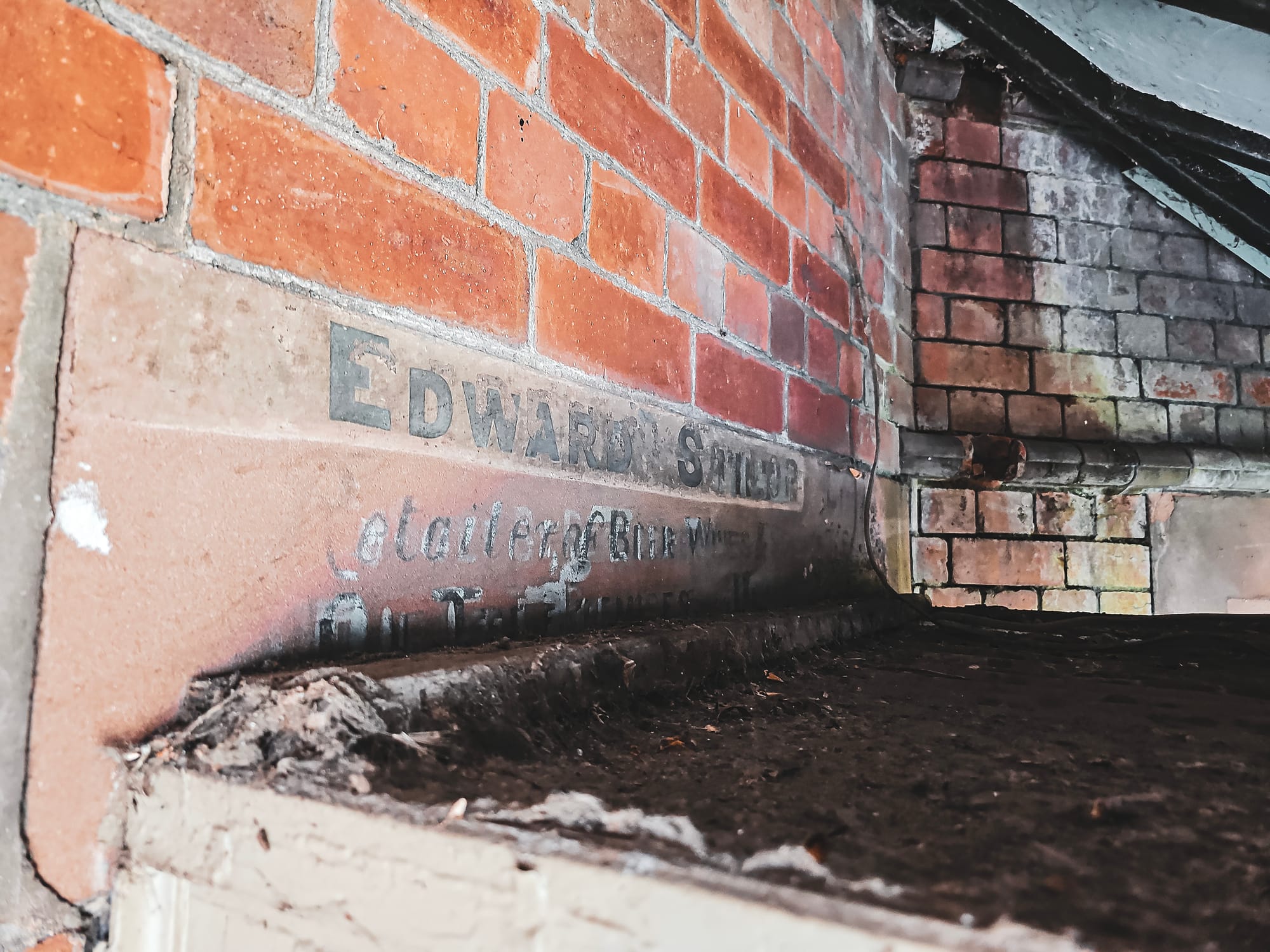
This period under the Straw family's management is notable not only for the sense of community it cultivated but also for continuing a legacy of hospitality that began with Edward Straw Senior in the 1880s. Edward Straw senior's initial foray into the hospitality industry laid the groundwork for what would become a family tradition. His involvement in running an inn demonstrated an early commitment to serving the community, a legacy that Ted and Sybil Straw would later embrace and expand upon in the mid-20th century. Edward’s name is still written on the stone of the pub, above the front door. Tucked away from sight and almost covered when the front porch was added to the building at a later date.
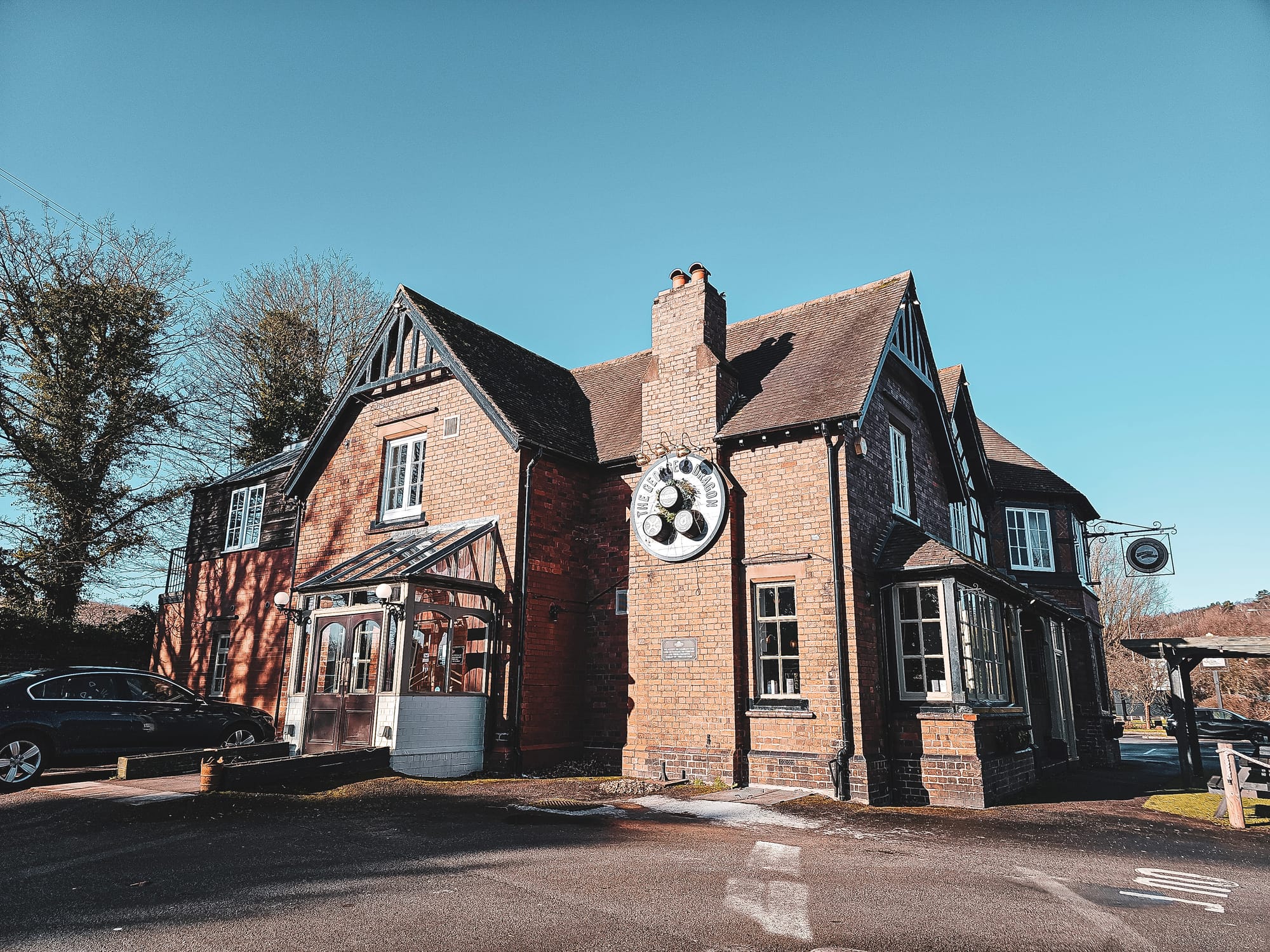
Throughout their time managing the George and Dragon, Ted and Sybil Straw were instrumental in ensuring the pub remained a vibrant hub of social life in Meaford. Their efforts to maintain the pub's reputation as a welcoming and inclusive space contributed significantly to its enduring importance in the community. The Straw family's multi-generational involvement in the hospitality industry, from Edward Straw senior through to Ted and Sybil, underscores a lasting connection to the field and a continuous commitment to community service.
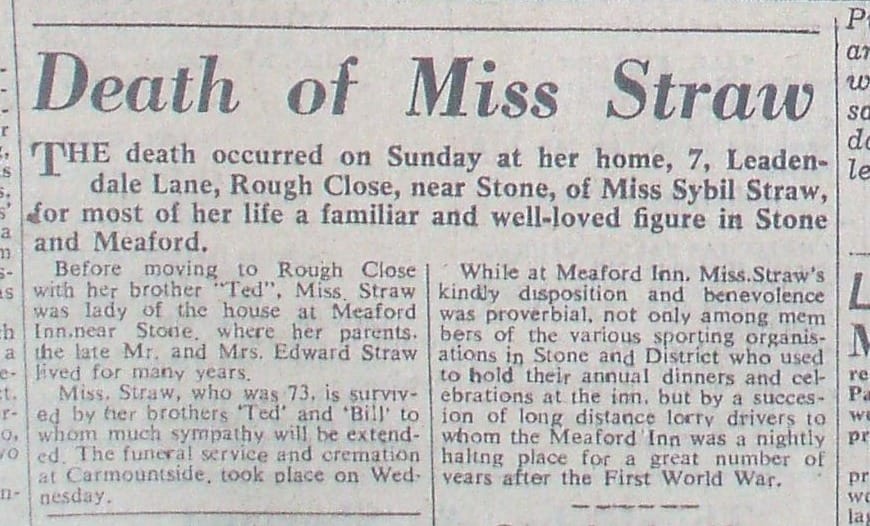
Beyond her role in the pub, Sybil Straw made significant contributions to the community during World War II as a member of the Air Raid Precautions (ARP) service. Her involvement in the ARP highlighted her commitment to public service, going beyond the hospitality industry to ensure the safety and well-being of her fellow citizens during a time of national crisis. The ARP was responsible for the protection and assistance of civilians during air raids, including the management of public air raid shelters, providing first aid, and helping with evacuation if necessary.
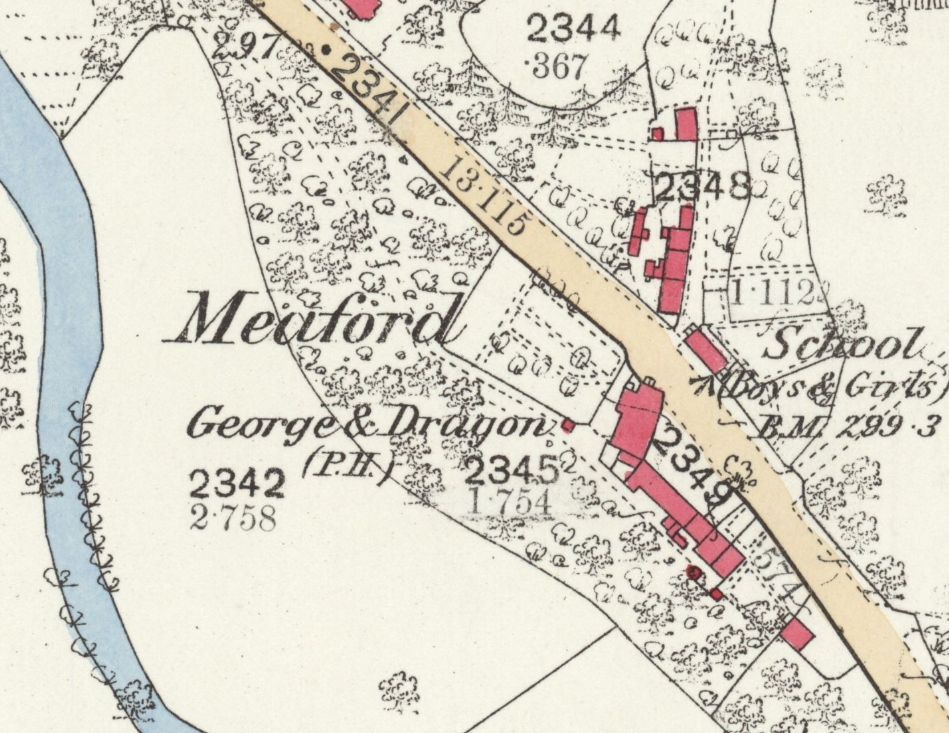
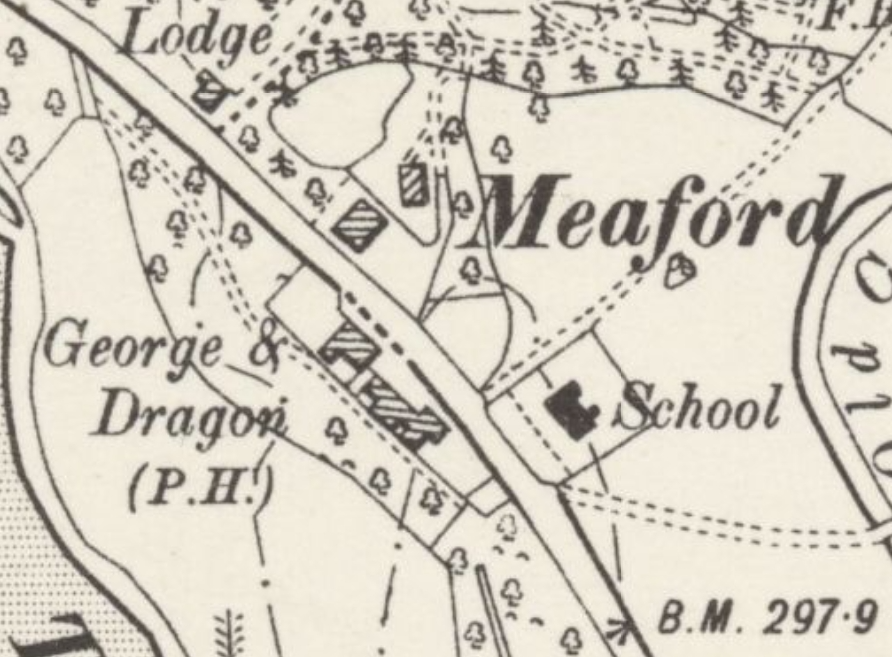
The 1879 and 1899 OS maps of Meaford. You can see where the old buildings of the village, including the pub and farm were replaced.
Modern Developments
In 1987, the original farm buildings of the pub were demolished, marking a significant moment of change for this historic establishment. The demolition of the buildings came before the establishment of a conservation area that could have provided some level of protection or consideration for these structures. The decision to demolish these buildings might reflect broader trends of the time, where redevelopment and modernization efforts often overlooked the historical and cultural value of such buildings.
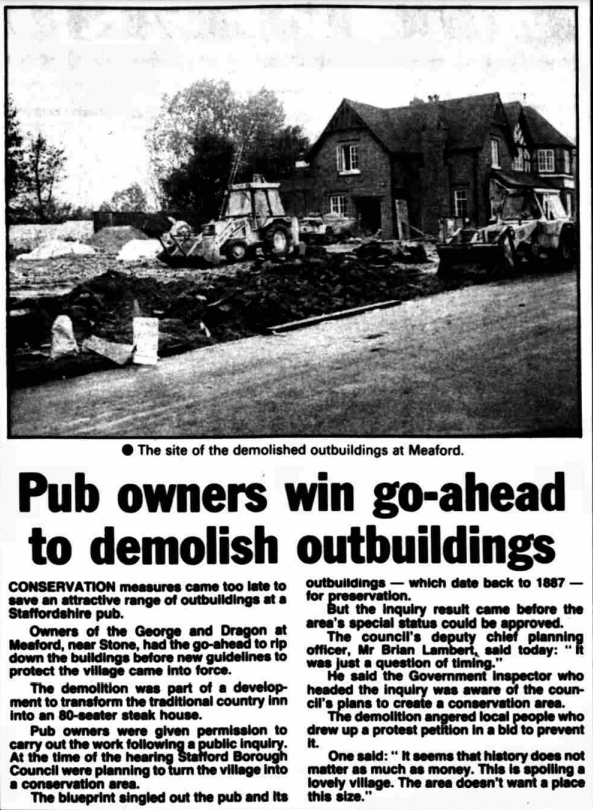
The loss of these buildings not only signifies a physical change in the landscape but also represents a break in the historical continuity of Meaford, erasing tangible links to its past. The demolition before the implementation of conservation measures highlights the challenges in preserving historical sites, especially in areas undergoing rapid change or those not initially recognized for their cultural or historical significance. This event underscores the importance of timely and proactive conservation efforts to protect historical assets for future generations.
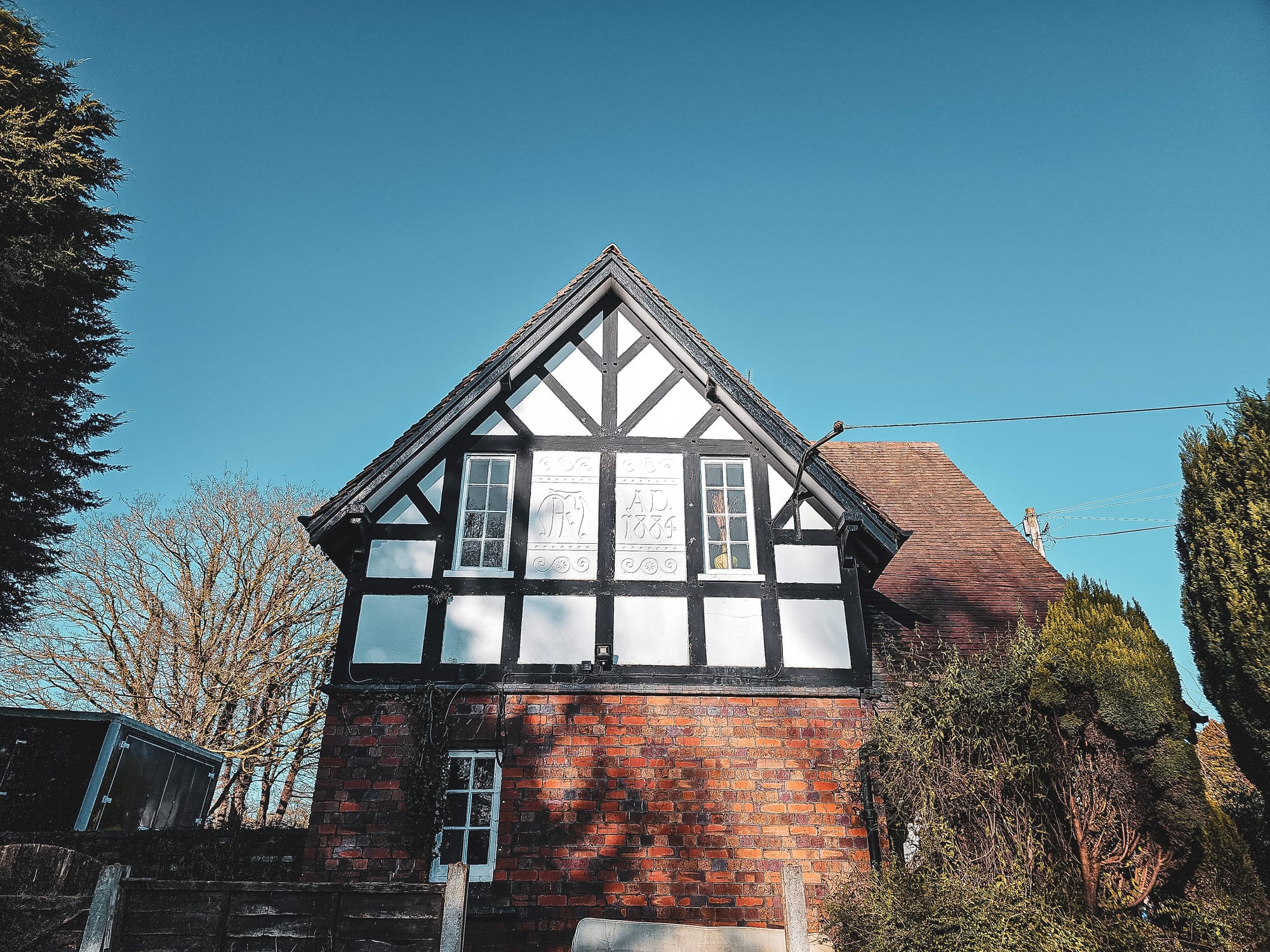
There is one building that survived the demolition though, and this building has an interesting sandstone block in it, with what looks like a date. It could be from the earlier buildings, possibly the top of a doorway or window. I cannot find any record of what this may be though. The most likely scenario is that it is from a local building that was demolished, either the earlier farm and inn or something else.
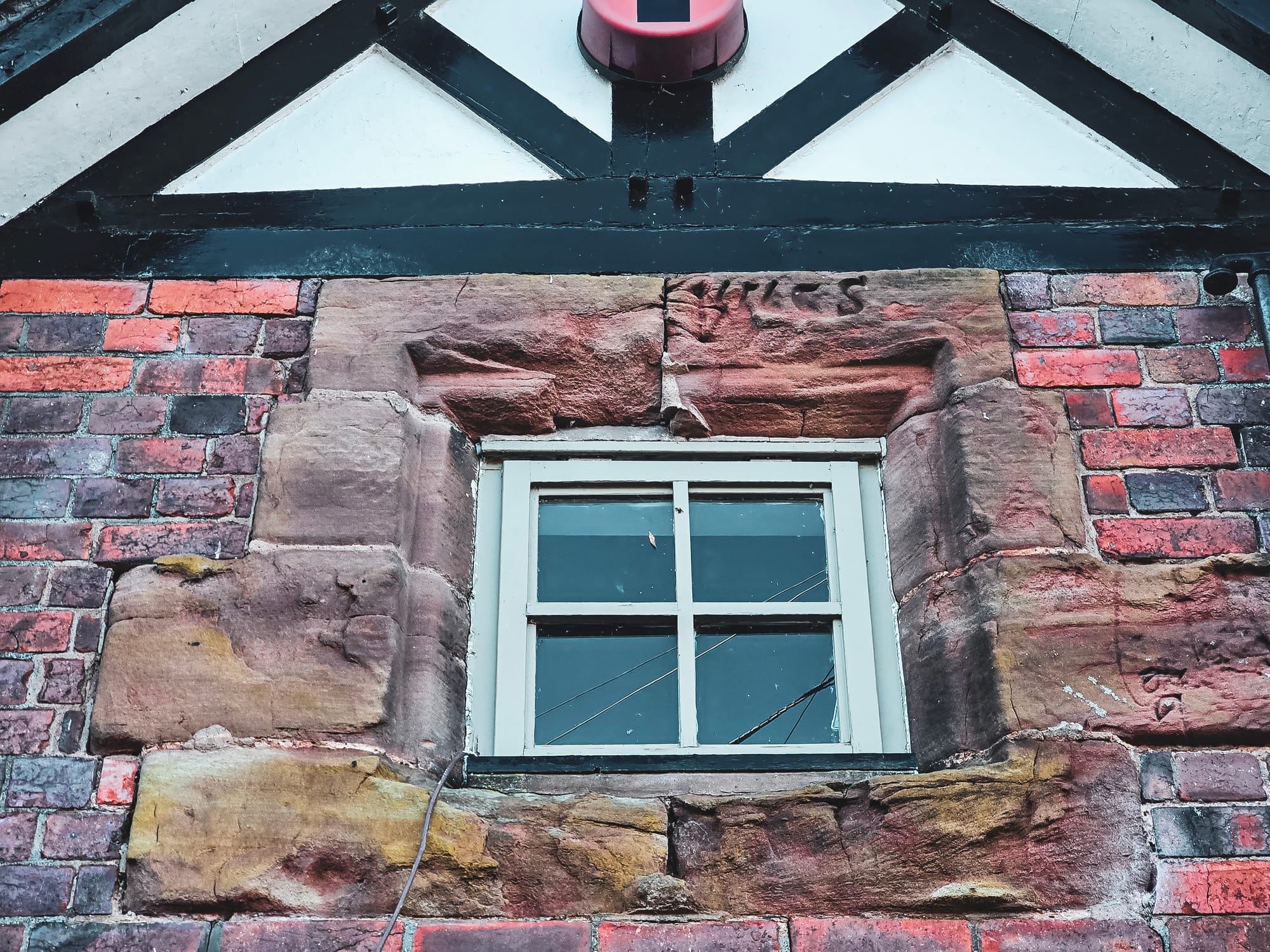
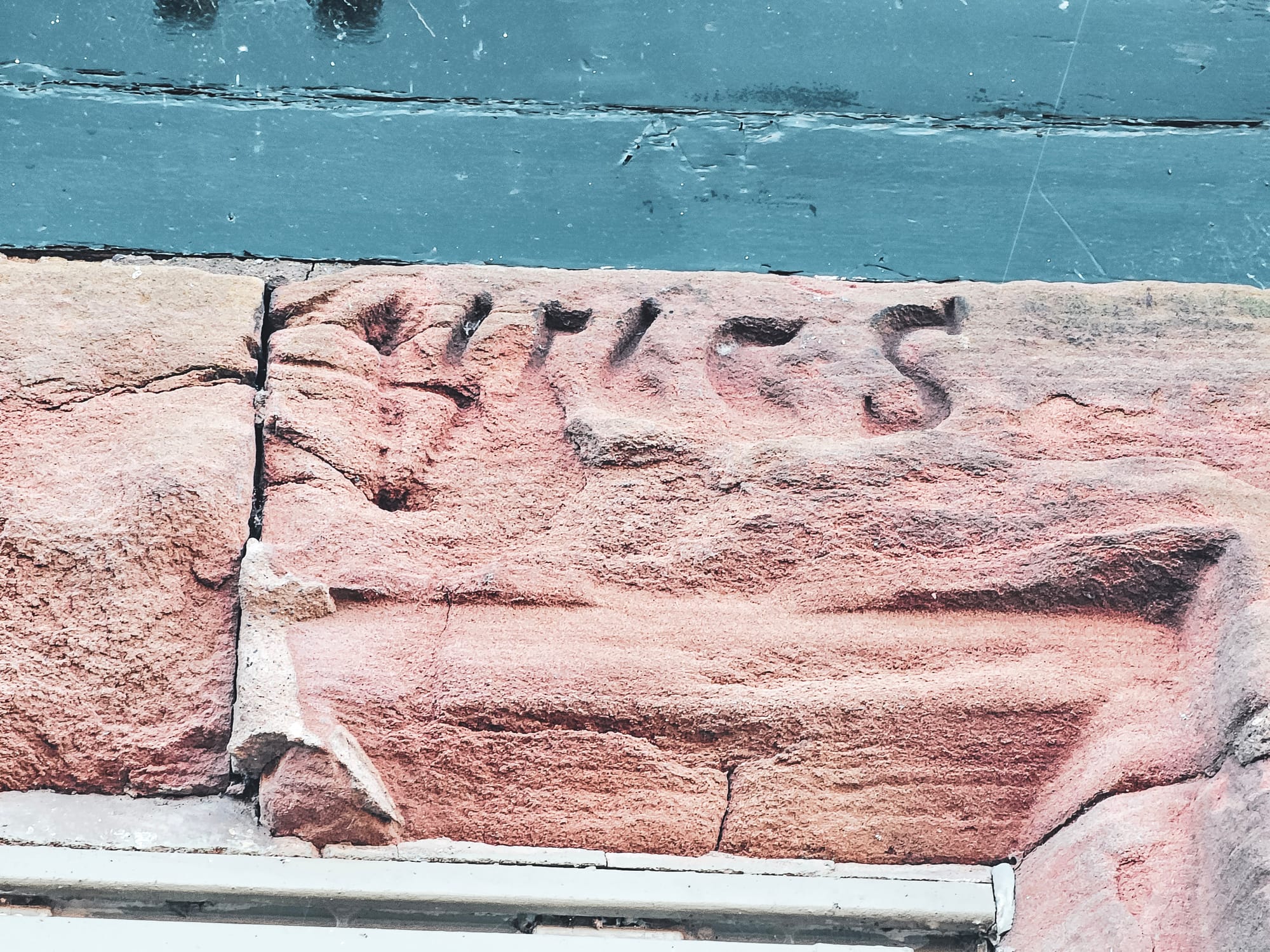
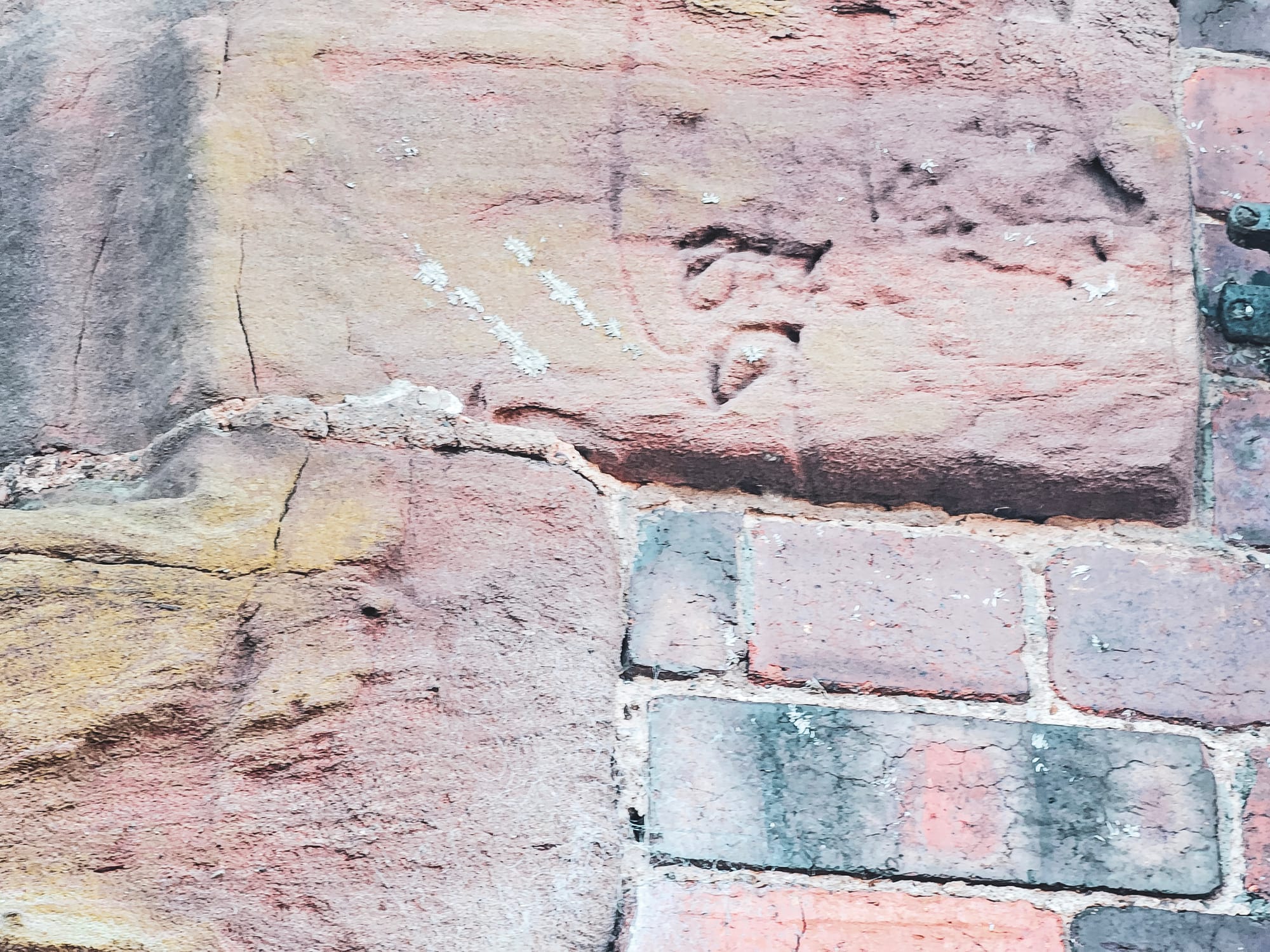
The sandstone block above the window looks like it has a date inscribed
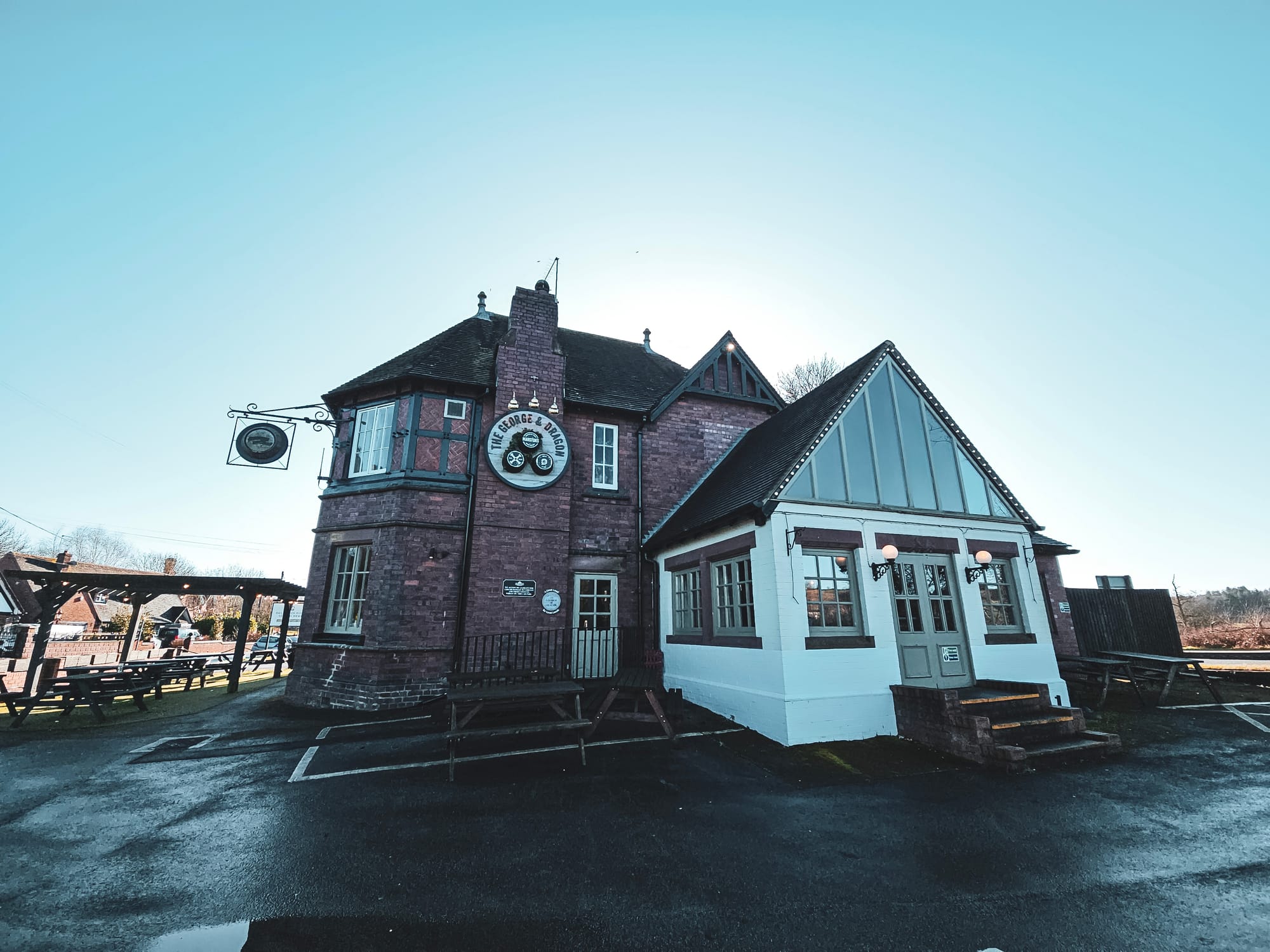
A decade later, in 1997, a conservatory was added to the George and Dragon, breathing new life into the pub and ensuring its continued relevance to the community. This addition represented a thoughtful blend of respect for the pub's rich history and a nod towards modernity, offering patrons a space that was both contemporary and reflective of the pub's heritage.
Today, the George and Dragon remains a celebrated establishment in Meaford, continuing to serve as a gathering place for people, both local and from afar. Its rich history and capacity for transformation demonstrate the enduring significance of the pub in the village's social and cultural life and it's location on the A34 makes it the perfect place to visit in a car.
If you would like to visit the George & Dragon in Meaford, here is the location.

Please sign my petition
Thank you for reading!
If you like what you have read, please feel free to support me by following and signing up for my newsletter and/or buying me a coffee!

If you love our local history, don't forget to follow me, check out more of my videos and my website http://www.theredhairedstokie.co.uk
Don't forget to subscribe to my YouTube channel - https://www.youtube.com/channel/UCCA246yaLXVDHSB-MrFMB2A
Check out my recommended reading list
